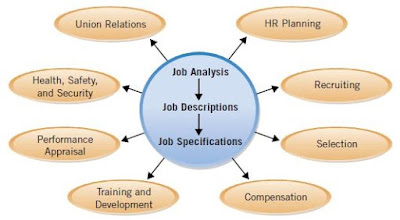Recruitment, Selection, Orientation
Recruitment

It is the process of searching candidate for employment and stimulating them to apply for the job in the organisation.
Sources of Recruitment
Internal Sources
Internal Job Posting (IJP)
External Sources
- Recruitment at factory gate
- Advertisements
- Educational Institutes
- Telecasting
- Unsolicited Applications
- Employment Agencies
- Refrences
Selection
It is the process of picking individual who have relevant qualifications and experiences to fill jobs in an organisation. This process establishes a contractual relationship between the employer and the worker.
Factors in selection
- Physiological Features – Physique, Height, Weight, Sight, Endurance
- Personal Characteristics – Marital status, Size of family, Economic Position
- Proficiency – Qualification, Training, Experience
- Competency – Potential for learning and performaing
- Temperament – Mental and emotional stability, Honesty, Loyalty, Social skills
- Aptitude and Attitude – Finding out the interest of person in a job
Selection Process :
Every organisation design its own selection process that suits its requirements. However basic steps are as follows:
- Receiving Application
- Application Blank
- Screening Interview
- Employment Test
- Selection Interview
- Medical Examination
- Reference Check
- Hiring Decision
Induction / Orientation
It is the process of introducing a new employee to the job and the organisation. It involves providing him the basic information he needs to settle down quickly and start his work in comfortable ways.
Stages in Induction Programme
- Introduction
- Socialisation
- Follow-ups
Job Analysis and Job Discription
Job Analysis
It is a formal and detailed examination of job in order to understand the tasks and needs to be done and the skills required to do these task under the job. Job analysis provides the analyst with basis data related to specific jobs in terms of duties, responsibilities, skills, knowledge, degree of risk etc.
Benefits of Job Analysis
1. Helps HRP in determining the number and kinds of jobs and qualifications needed to fill the jobs.
2. Makes recruitment and selection process easier
3. Placement, orientation, training and development program makes easy
4. Helps in determining the relative worth of various jobs
5. Establishes standards of performance and appraisal
6. Helps in vocational guidance and counselling of employee
7. Provides opportunity to trace out health hazard related with job
Job Analysis Process
1. Organisational Analysis
2. Collection of Job Analysis Data
3. Preparation of Job description
4. Preparation of Job Specification
Job Description
It is a written statement of what the job holder does, how it is to be done, under what condition it is done, and why it is done. It throws light on job content, environment and condition of employment. It defines purpose and scope of a job.
Content of Job Description
1. Job Title – Designation, Code, Department
2. Job Summary – A Brief write-up about the job.
3. Job Activities – A description of the task done
4. Working Conditions – Time, Working hours and Days
Job Specification
It is a written statement of personal attributes in terms of Skills, Knowledge and Abilities (SKAs) to perform a particular job. It is useful in the selection process to decide right person.




